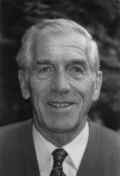- Paul Watzlawick
Infobox Philosopher
region = Communication theorist
era =
color = #B0C4DE
name = Paul Watzlawick

image_size = 150px
image_caption =
birth =July 24 1921 ,Villach ,Austria
death =March 31 2007 ,Palo Alto, California United States
school_tradition =Communication theory
main_interests = Communication Theory and Radical Constructivism
spouse =
influences =Gregory Bateson ,Don D. Jackson , John H. Weakland,Jay Haley
influenced = generalpsychotherapy ,family therapy ,Radical constructivism ,Constructivist epistemology ,cognitive behaviour training
notable_ideas="One Cannot Not Communicate", ...Paul Watzlawick,
Ph.D (July 24 1921 -March 31 2007 ) was a theoretician in Communication Theory and Radical Constructivism and has commented in the fields offamily therapy and generalpsychotherapy . He was one of the most influential figures at theMental Research Institute and lived and worked inPalo Alto, California until his death at the age of 85.Life
After he graduated from high school in 1939 in his hometown of
Villach ,Austria , Watzlawick studiedphilosophy andphilology at theUniversità Ca' Foscari Venice and earned a doctorate degree in 1949. He then studied at the Carl Jung Institute inZurich , where he received a degree in analytical psychotherapy in 1954. In 1957 he continued his researching career at theUniversity of El Salvador .In 1960, Don. D. Jackson arranged for him to come to
Palo Alto to do research at theMental Research Institute (MRI). In 1967 and thereafter he taughtpsychiatry atStanford University .Work
At the
Mental Research Institute inPalo Alto, California Watzlawick followed in the footsteps ofGregory Bateson and the research team (Don D. Jackson ,John Weakland ,Jay Haley ) responsible for introducing what became known as the "double bind " theory of schizophrenia. Watzlawick's 1967 work based on Bateson's thinking, Pragmatics of Human Communication (with Don Jackson and Janet Beavin), became a cornerstone work of communication theory. Other scientific contributions include works on radical constructivism and most importantly his theory oncommunication . He was active in the field offamily therapy .Watzlawick was one of the three founding members of the Brief Therapy Center at MRI. In 1974, members of the Center published a major work on their brief approach, "Change, Principles of Problem Formation and Problem Resolution" (Watzlawick, Weakland, Fisch).
Watzlawick defines five (5) basic axioms in his theory on communication that are necessary to have a functioning communication between two individuals. If one of these axioms is somehow disturbed, communication might fail. All of these axioms are derived from the work of Gregory Bateson, much of which is collected in "Steps to an Ecology of Mind" (1972).
* "One Cannot Not Communicate (Man kann nicht nicht kommunizieren)": Every behaviour is a kind of communication. Because behaviour does not have a counterpart (there is no anti-behaviour), it is not possible not to communicate.
* "Every communication has a content and relationship aspect such that the latter classifies the former and is therefore a metacommunication.": This means that all communication includes, apart from the plain meaning of words, more information - information on how the talker wants to be understood and how he himself sees his relation to the receiver of information.
*"The nature of a relationship is dependent on the punctuation of the partners communication procedures": Both the talker and the receiver of information structure the communication flow differently and therefore interpret their own behaviour during communicating as merely a reaction on the other's behaviour (i.e. every partner thinks the other one is the cause of a specific behaviour). Human communication cannot be desolved into plain causation and reaction strings, communication rather appears to be cyclic.
* "Human communication involves both digital and analog modalities": Communication does not involve the merely spoken words (digital communication), but non-verbal and analog-verbal communication as well.
*"Inter-human communication procedures are either symmetric or complementary", depending on whether the relationship of the partners is based on differences or parity.
Publications
Watzlawick is author of 18 books (in 85 foreign language editions) and more than 150 articles and book chapters. Books he has written or on which he has collaborated include:
* "Invented Reality: How Do We Know What We Believe We Know? (Contributions to constructivism)"
* "Pragmatics of Human Communication",
* "The Situation is Hopeless, but not Serious,"
* "Ultra-Solutions: How to Fail Most Successfully,"
* "How Real is Real?"
* "Change" (with John Weakland and Richard Fisch)
* "The Language of Change"ee also
*
Constructivist epistemology External links
*http://www.colorado.edu/communication/meta-discourses/Theory/watzlawick/
*http://www.mri.org
Wikimedia Foundation. 2010.
